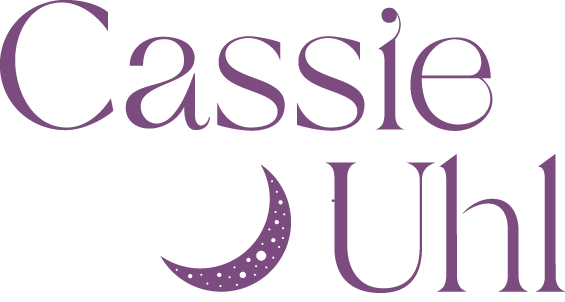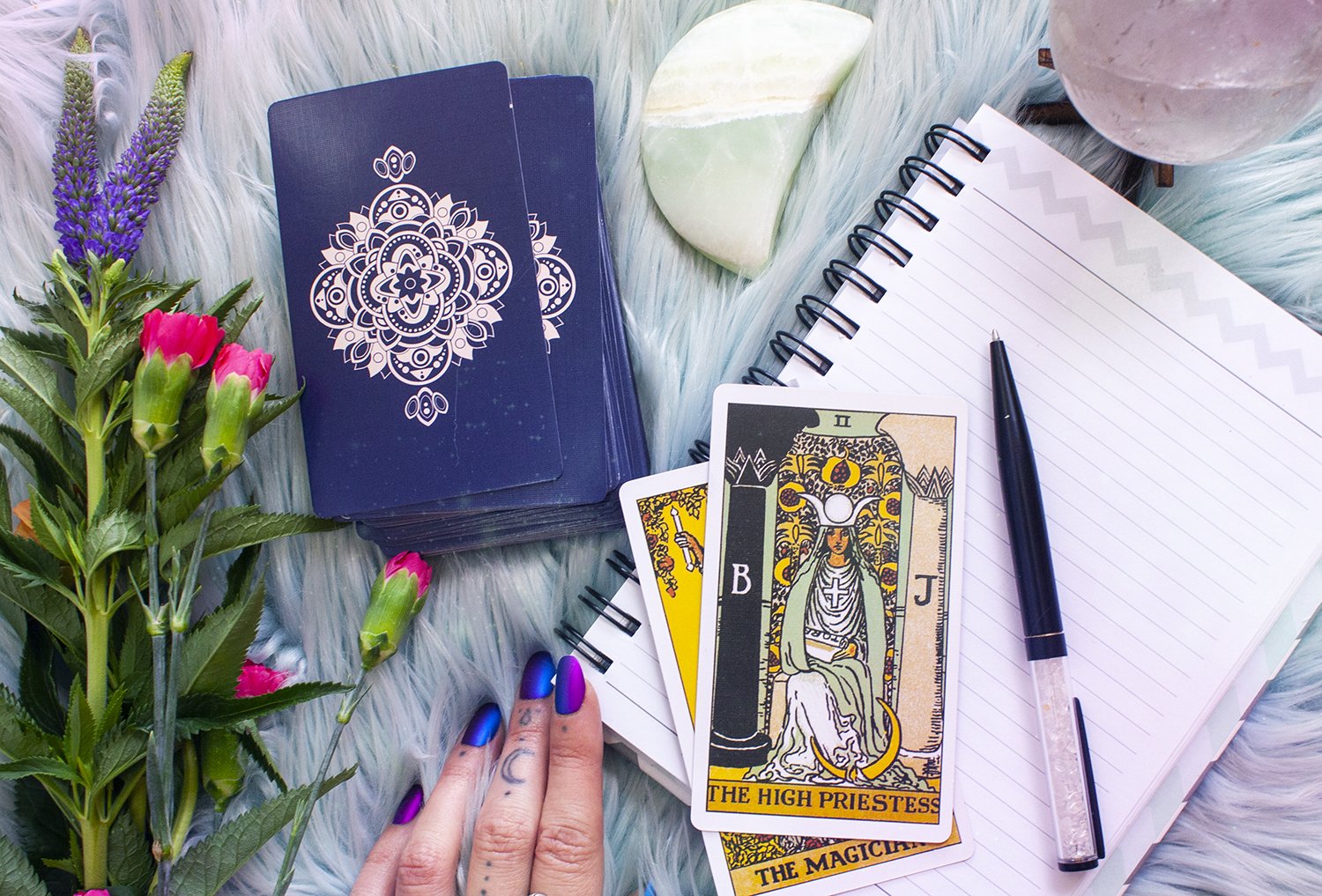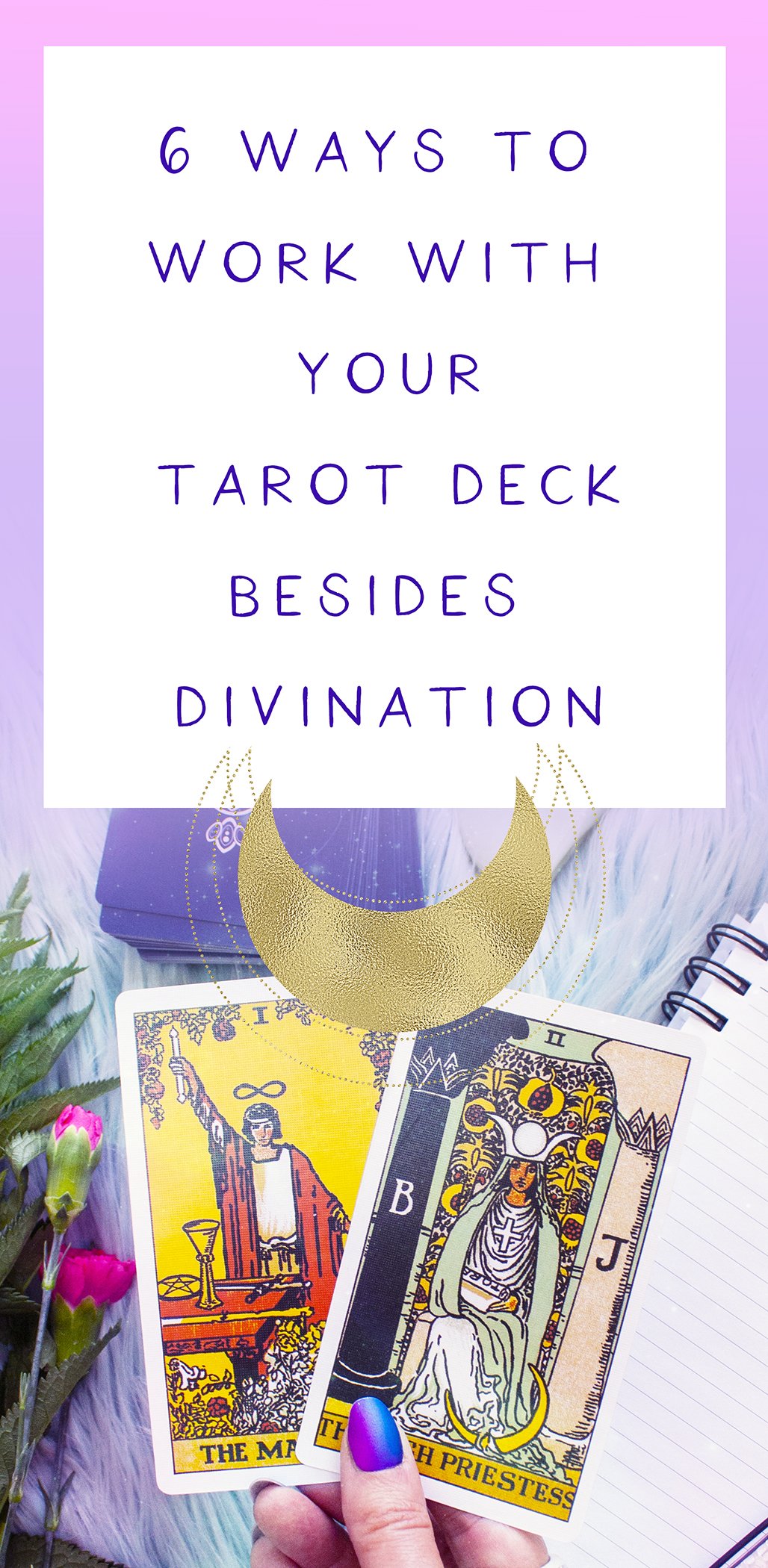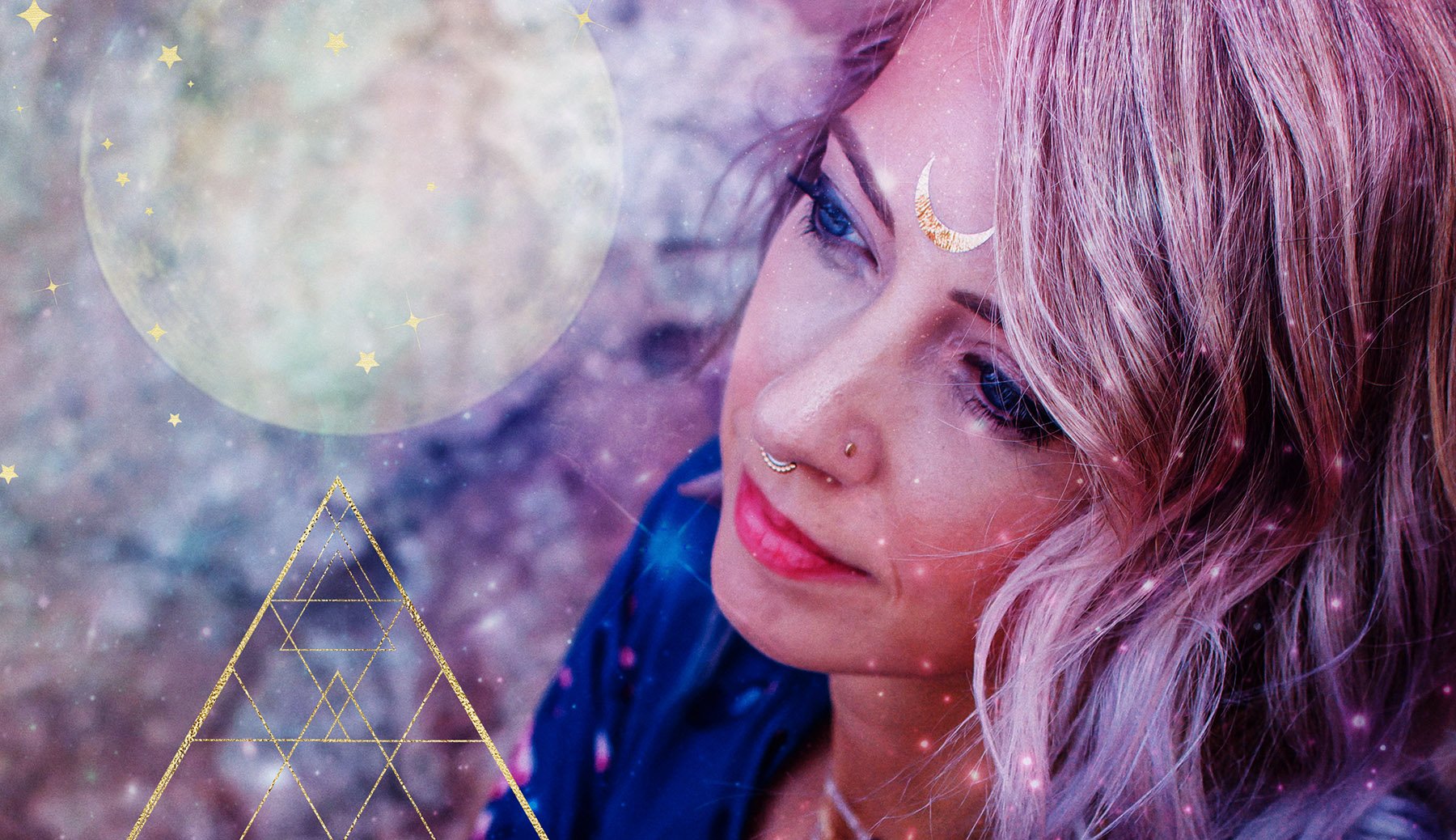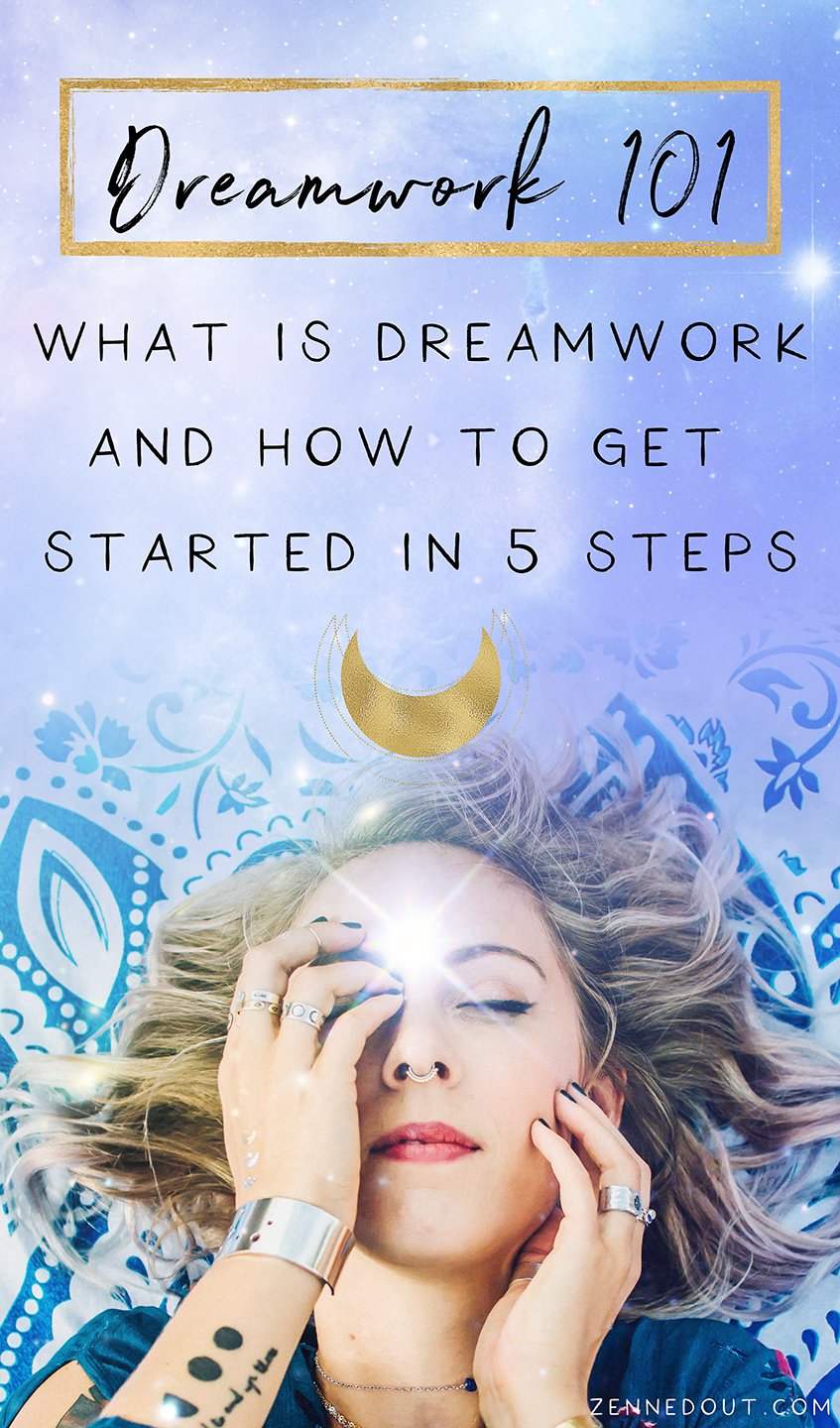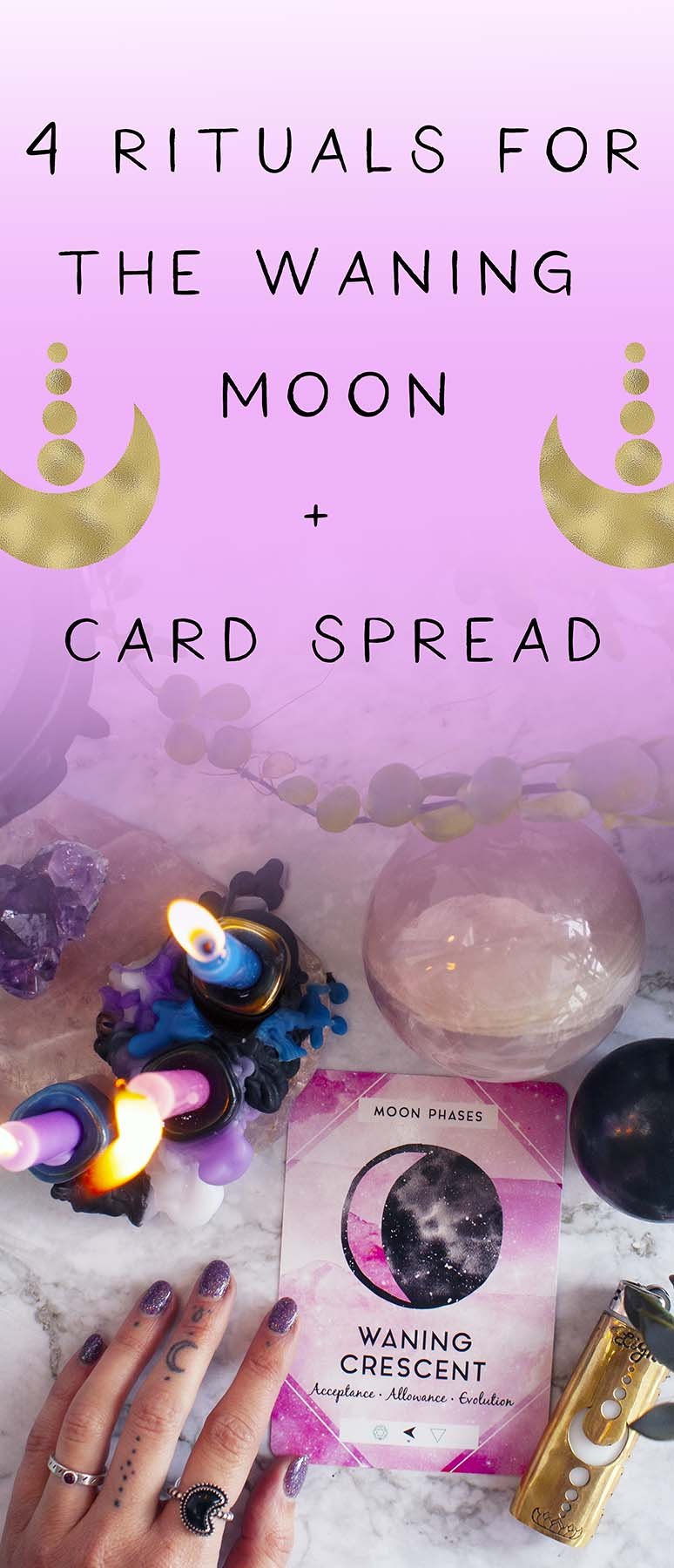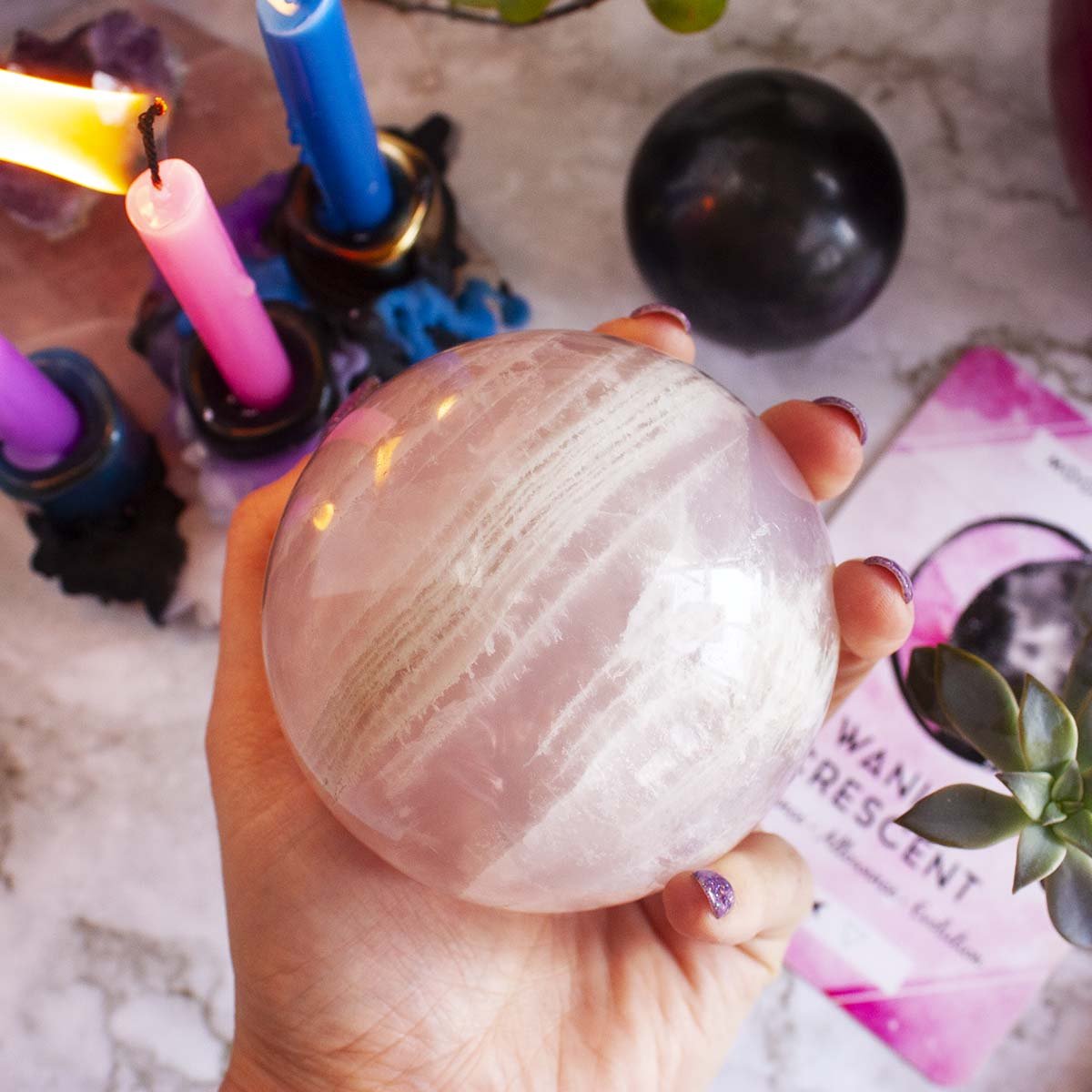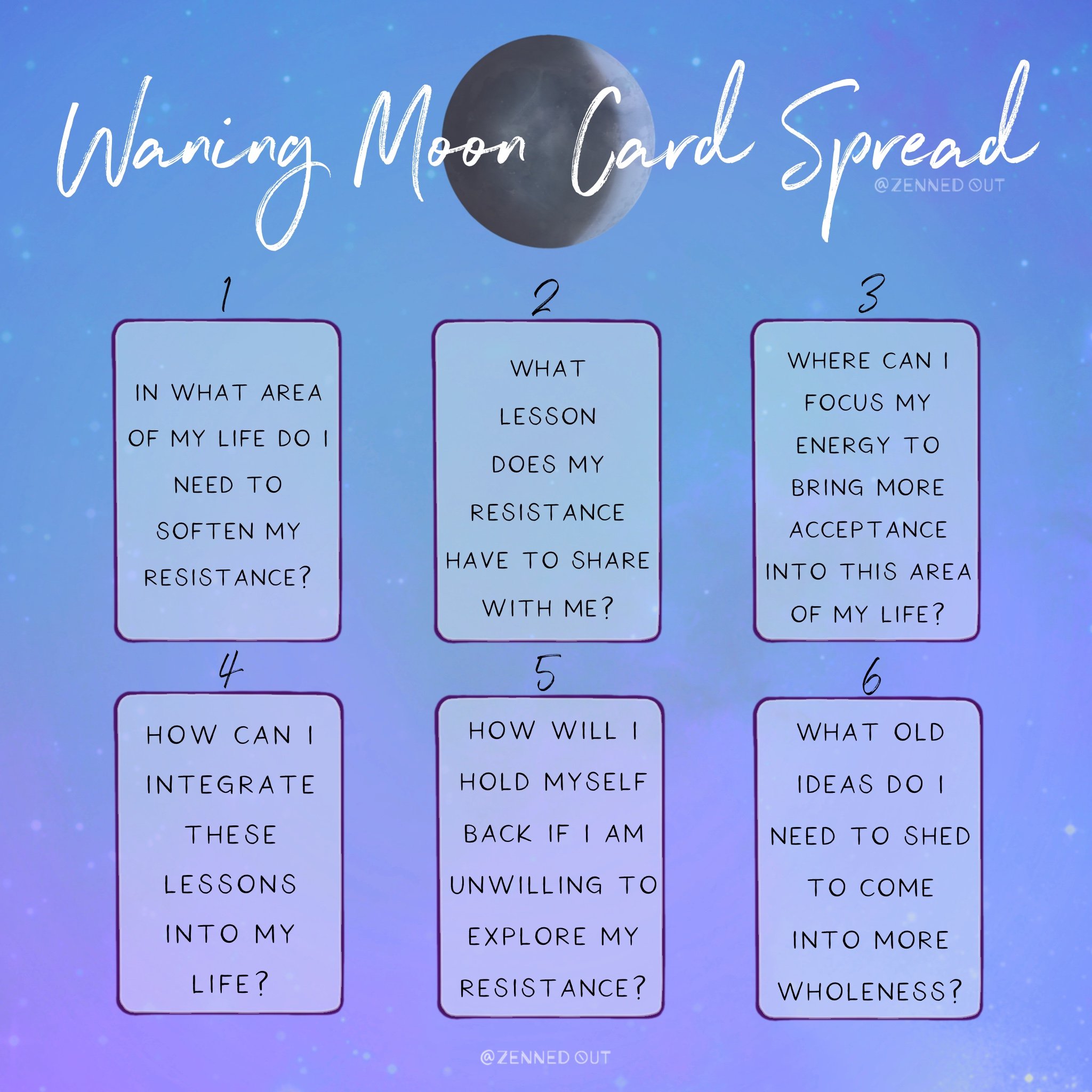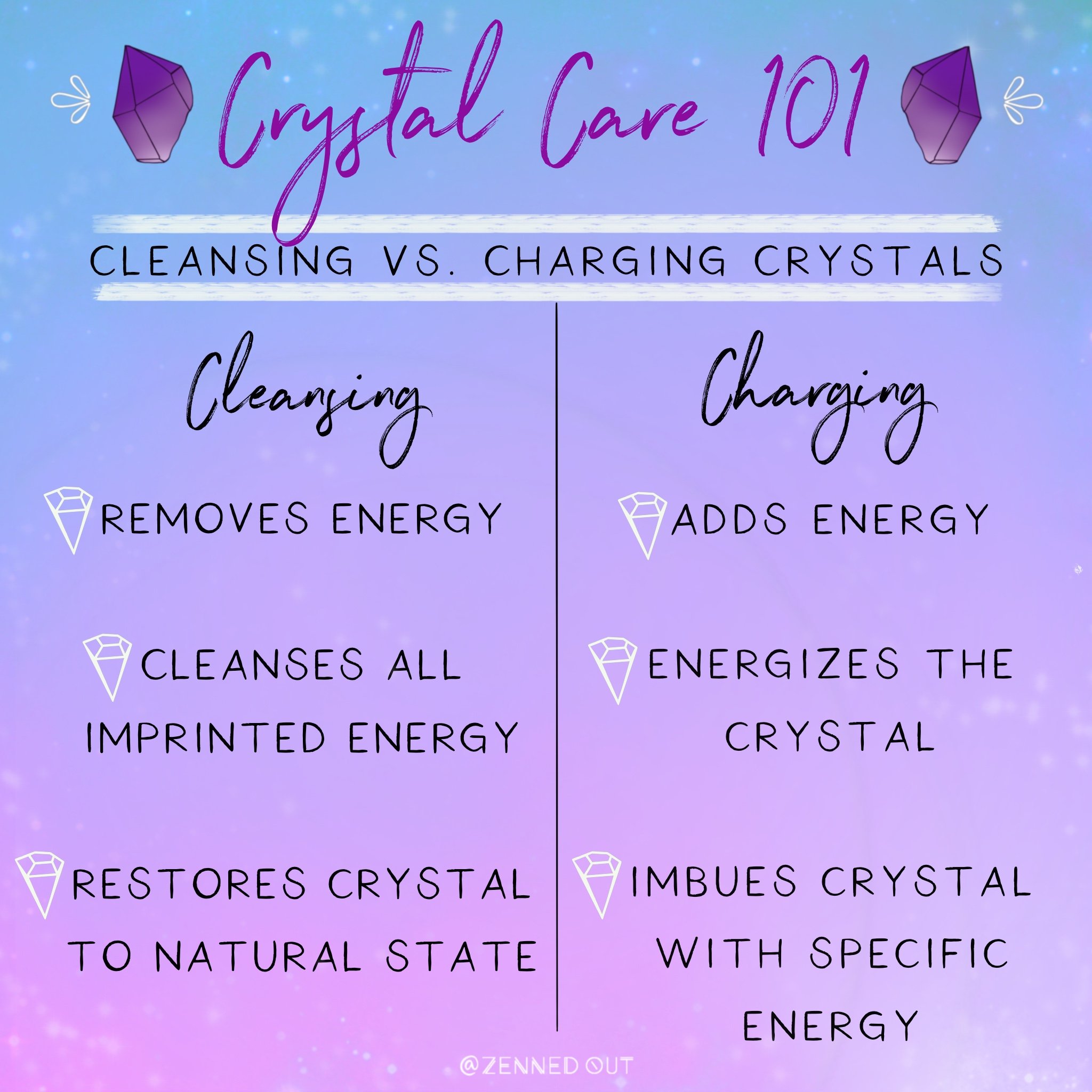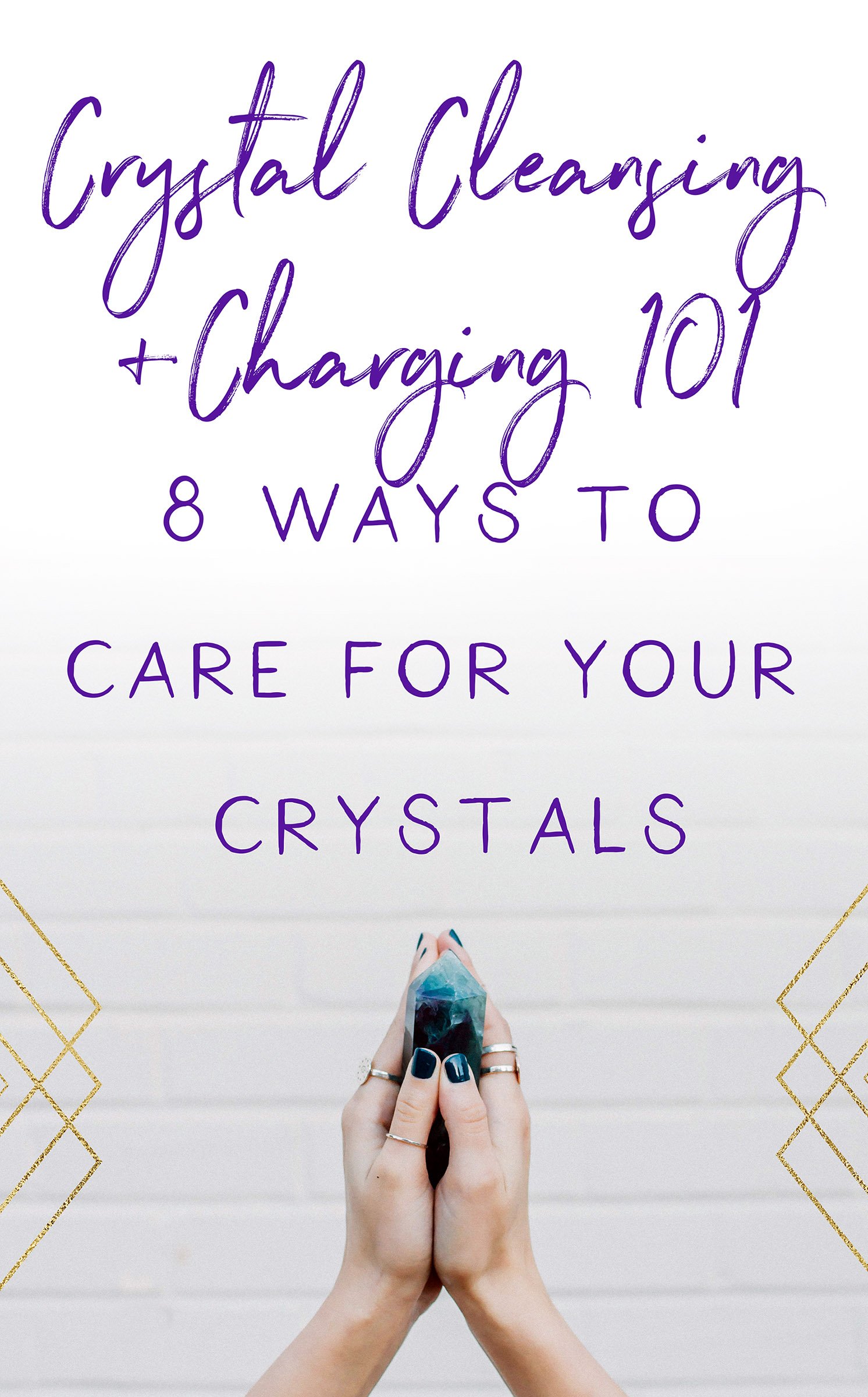A Card Spread for the Winter Solstice
The winter solstice, or Yule, is the year's shortest day and longest night. Yule is a sabbat on the Wheel of the Year that marks midwinter, and even though it’s the darkest time of the whole year, it represents a time of death and rebirth. Here is a card spread to help identify, grieve, and release what’s ready to be shed and reborn within yourself this season.
The Moon as Shadow Work // How Aligning with the Moon Invites Shadow Work and Tips to Make Lunar Work a Daily Practice
The moon comes after walking through the tower and the renewed spark of inspiration from the star in the tarot. The moon serves as a portal between worlds, sitting in between the star and the sun. The star is the inspiring rebirth and the sun is the ego-self, shining bright. But in between them, the moon shows up to call you inward. It's an invitation to explore everything that's come to pass at the subconscious level.
The moon comes after walking through the tower and the renewed spark of inspiration from the star in the tarot. The moon serves as a portal between worlds, sitting in between the star and the sun. The star is the inspiring rebirth and the sun is the ego-self, shining bright. But in between them, the moon shows up to call you inward. It's an invitation to explore everything that's come to pass at the subconscious level.
It's within this portal that shadow work comes in, which could go by so many other names: soul work, subconscious work, "dark night of the soul," or emotional exploration, etc. Shadow work calls you in to peel away the surface and explore the parts of yourself that you often ignore, hide, or push away.
Listen to this post on my podcast, Rooting into Wholeness, below.
The moon's light is not her own. Its light is reflected by the sun. The moon is the mirror. What shadowy areas within your soul need to have a mirror held up to them?
Shadow work, like the moon, is a portal to wholeness. One cannot exist without the other. Your shadow work is still there even if you are not addressing it. It does not just go away. It remains untouched and undiscovered. A powerful healing tool waiting to be utilized and waiting to bring you to wholeness.
So many want to skip over this important portal. Here's the thing, though. You can't. The opportunity will keep repeating itself until you decide to walk through the shadowing realms of your subconscious. In my experience, I've learned that if you ignore your shadow long enough, it will come crashing down and force you to examine what needs to be learned and seen. No amount of love and light can keep you from knowing all facets of life. We're human. It's why we're here.
How to work with the moon to honor your shadow
How can you embody the energy of the moon, her wisdom, to approach this inner shadow work? It starts as noticing the moon in her phases and turns into allowing these phases to influence your rituals. The shifts will be subtle, but eventually, shadow work will become a regular part of your life. Here are three ways to start weaving more lunar energy into your daily practice.
Much of this work is observational and feeling work that needs to happen within the mind and body. All other tools (crystals, herbs, cards, etc.) and are ancillary allies. Use them if you feel called, but do not let them be prohibitive to your growth if you do not have them handy.
1. Become more aware of the moon. Let's first start by connecting with lunar energy regularly. Track her, notice her, and notice how you feel in her different phases. If working with the moon is new to you, start by solely noticing when the moon is in her waxing phase vs. waning phase (I find this more helpful than tracking the new/full moon.) Learn more about waxing vs. waning lunar energy in a past post here.
When you begin to adopt the moon's cycles into your daily life, you will begin to understand the necessity of living more cyclically. Rather than shaming yourself for needing to go within, you will appreciate it as a natural phase. Here's a non-exhaustive list of some ways that I connect with lunar energy regularly.
Look for the moon anytime you are outside at night or consciously decide to go outside and seek her out regularly. You will soon learn where the moon lives in the sky during different parts of her cycle.
Track her with an app. I like to keep a pulse on when the moon shifts from waxing to waning phase and vice versa. Using an app is an easy way to know when these shifts happen. I also like to know what astrological sign the moon is living in as this also affects her energy. My favorite app is The Moon App. The free version is great, but I prefer the paid version.
Wear a specific piece of jewelry is a reminder of whether the moon is waxing or waning. I have a moon-shaped ring that I flip, so the moon is facing inwards or outwards according to whether the moon is waxing or waning. However, there are many ways to do this. You could wear a specific necklace, ring, or bracelet for waxing vs. waning energy. Doing this brings the energy of the moon into the physical and offers you a daily reminder.
2. Bring the moon into your rituals. If your ritual practices only include rituals to make you feel good or to manifest, you're missing out on some big growth opportunities and magick-making. When you invite lunar energy into your rituals, you open the door to more profound transformations through shadow work. The moon does not stay stuck in her growth, waxing, manifesting phase, and neither should you.
Everyone's ritual practice varies, but there are ways to bring lunar energy into just about any ritual. Bringing lunar energy into your rituals will require you to be more mindful about your ritual practices. Here are a few ways to work lunar energy into common ritual practices.
Burn candles and herbs in line with lunar energy. If candle magick, incense, or herbs are a part of your ritual practice, this is an easy place to honor the moon. How can you be more mindful about what candle colors or herbs you're working with? For example, I would avoid more energizing plants and colors like peppermint, citrus, and candle colors like red, orange, and yellow during a waning moon phase. I will often burn a simple white candle during a new moon, and during a dark moon, phase black.
Invite lunar energy into your meditation practice. Honoring the moon in your meditation practice can be done for each phase or just waxing and waning energy. If you already have a meditation practice, this will be a simple way to begin engaging with the moon's energy on a deeper level. In my meditation practice, this looks like doing more energy clearing at the end of the waning moon phase, being more open to guidance from Spirit at the start of the waxing phase and around the new moon, and focusing on gratitude during the full moon. I wrote a full post about it here.
Place specific items on your altar or sacred space for certain moon phases, or consider an altar refresh for specific moons. If an altar is a part of your ritual practice, be open to how you can weave lunar energy into your sacred space. I usually update my altar based on the seasons. However, some lunar events warrant a full altar refresh. I invite you to trust when you feel called to do this. Even if you don't want to refresh your altar completely, placing specific herbs, candles, or tarot/oracle cards on your altar for specific phases can also be a powerful way to connect with the moon.
Simple changes like these begin to make working with the moon a part of life and a way of living. You can find many blog posts here about working with the specific energy of each moon phase. However, I do find some of these basic things just as impactful as they make honoring and connecting with the moon more of a daily practice rather than something you only do on new and full moons.
3. Study the moon card in the tarot (any deck.) While studying the moon card, notice what comes up for you? Each deck will bring a different kind of flavor, but the energy of the moon card will remain consistent from deck to deck, as will the placement of the card amongst the Major Arcana. This may not be true if working with moon card in an oracle card deck (learn more about the difference between tarot and oracle cards here.)
Notice the cards around the moon in the tarot and the story they tell. Where does the moon sit in the Major Arcana? What cards are nearest to it? I discussed this a bit in the introduction. But one way to view its placement is as a portal between the star and the sun. Like all wisdom from the tarot, allow yourself to be open to different teachings and ideas. This is just one viewpoint. The wisdom in this step will come from finding your own meaning from the moon card in the tarot. Here are some ways to work with this card.
Place the card on your altar or somewhere else where you'll see it regularly.
Journal or meditate on the moon card. What comes up for you when you look at it? What stands out? What does it mean to you at this moment?
Read about the meaning of the card from different perspectives. Some of my favorites are Rachel Pollock's book 78 Degrees of Wisdom and teachings from Lindsay Mack on her podcast Tarot for the Wild Soul.
Draw your own version of the card. What comes to your mind when you think about creating your own version of the moon card? Allow yourself to be a channel for its wisdom.
If you find these offerings overwhelming, begin implementing what feels the most aligned and appealing to you. Or, if you feel up for a fun shift in perspective, select the one that feels the scariest to you!
Working with the moon as a spiritual practice is an invitation to honor all phases of life, including death, shadow, and transformation. These are necessary phases of all life, even yours. When you open yourself up to being in alignment with all of these phases, you open yourself up to being whole, flawed, and simultaneously perfect. The shifts and changes to living alongside the moon will happen slowly over time. Until one day, you realize you allow and honor all of your phases.
This shift is the magick of embodying shadow work, living cyclically, and aligning with the moon. For more on shadow work, check out these past posts.
6 Ways to Work With Your Tarot Cards Besides Divination
Divination is a fantastic way to work with the tarot, but you’re selling yourself short with your trusted tarot deck if you’re only using it to glean insights into the future. At its core, and in my opinion, the tarot is a powerful self-reflective tool. It’s here to share insights and guidance about what’s going on with you right now, at this moment. Telling the future is one of the most common draws to tarot, but the tarot truly brings a host of other benefits.Read on for six ways to work with the tarot to grow and expand in new ways, aside from divination.
Divination is a fantastic way to work with the tarot, but you’re selling yourself short with your trusted tarot deck if you’re only using it to glean insights into the future. At its core, and in my opinion, the tarot is a powerful self-reflective tool. It’s here to share insights and guidance about what’s going on with you right now, at this moment. Telling the future is one of the most common draws to tarot, but the tarot truly brings a host of other benefits.
Read on for six ways to work with the tarot to grow and expand in new ways, aside from divination.
Working with Common Archetypes
The tarot is full of common archetypes that you will encounter or embody at different times in your life. Archetypes are timeless and universal energies that people can understand across cultures. For example, the archetype of the mother is something we can all understand on some level. Even if you do not have a relationship with your biological mother or have children of your own, the overarching energy of the archetype of the mother is something you can understand. Furthermore, you do not have to be a mother or a woman to embody the mother's archetype. Anyone can access and learn from the energy of motherhood.
The tarot is dripping with common archetypes, especially in the major arcana. The way the archetypes show up can be personal and vary from person to person. Most of the common archetypes appear in the major arcana, but they can also be found in the minor. Here are some of the archetypes I associate with the cards: the ego (the sun), soul (the moon), mother (empress), father (emperor), wizard (magician), child (the fool), lover (the lovers), martyr (hanged one), seer (hermit), and authoritarian (hierophant), etc. You may decide on different archetypal associations with different cards, and that’s fine.
So, how can you work with the archetypes of the tarot? Lots of ways! You can explore how the archetypal energies associated with the cards make you feel, you can look at the symbology on each card and explore how it makes you feel about its archetype, you can journal about the cards and their archetypal connections, and you can layer it into how you interact with and understand the cards.
Journaling
Journaling allows you to dive deep into the meaning and energy of each card. You’ll better understand the lessons each card wants to offer you through journaling about them. Truth be told, I’m not a big fan of journaling. Journaling with the tarot is different, though. I always write when I pull cards for myself. To begin journaling with the cards, you can work through them one at a time in order or intuitively select a card to journal about. Here are some suggestions for questions to ask yourself when you’re journaling about different cards:
How does this card make me feel?
What symbols or imagery jumps out to me?
Are there any archetypes or human themes that stand out to me in this card?
How does this card show up in my life right now?
What can I learn from this card?
Energy Readings
If you’ve followed my work long, you already know that I love all things energy! We are energy beings, and the tarot is another magical and beautiful way to work with your energy. What do I mean by this? Tarot is an excellent tool for reading your energy and understanding how to balance your energy.
Each card in the tarot corresponds with different energy. When you work with the cards specifically to assess your energy, the cards can act as a guide for what kind of energy you may need more or less of. Each card's energy can act as a signal that you either have too much or too little of that energy.
For example, if you pull some cards to determine what your energy needs to be more balanced and you pull loads of pentacles, that would be a sign that you need more grounding in your life to feel more balanced because the pentacles relate to the element of earth.
You could also consider pulling a card for each energy center or chakra in your body to get an idea of what each energy center needs to be in better balance. I dive into this more in-depth in my book, The Zenned Out Guide to Understanding Tarot.
Exploring and Understanding Common Correspondences
If you’re a visual learner, like I am, you’ll love working with the tarot to understand common correspondences better. I won’t spend too much time talking about this here because I already covered this in a previous post here.
Basically, each of the cards has a handful of correspondences (correspondences are simply energies that match or “play well together.”) The most common correspondences are the elements, astrological energies, and numerology. I’ve found that using the tarot as a tool to understand different types of energies better is immensely helpful, especially for visual learners. The cards' symbology and meanings will add a depth of understanding to your astrology, numerology, or elemental practice. You’ll also learn the tarot card meanings faster as well.
Shadow work
The cards of the tarot contain a complete range of human experiences. It does not gloss over the hard, scary, and sometimes earth-shattering parts of life. This is one reason why, I believe, so many are nervous about diving into tarot. It’s also why it can be such a powerful healing tool.
Your cards will not shield you from your shadow. Instead, they call you to cozy up to your shadow to understand better what it has to teach you. If the idea of shadow work is new to you, check out this previous post to learn more about what shadow work is. Here are a few ways to dive into shadow work using your tarot card deck.
Journal about the cards that make you the most uncomfortable. Use the questions above from the journaling section.
Ask questions specifically to explore your shadow, like “What parts of my shadow need healing and exploring?”, “ What do I have to learn from my shadow?” or “What parts of my shadow have I been avoiding?”
Spellwork & Magick
If you’re a fan of spellwork, altars, or magick, this one’s for you (it’s also another one of my favorite ways to work with my deck.) Because each tarot card carries a unique energy, they are perfect for adding energy and intention to spellwork, magick, and your altar. Here are a couple of ways to start working your cards into your magickal practice.
Place a card on your altar to invite in a specific kind of energy. For example, if you’re focusing on improving your intuition, you could place the moon, the high priestess, or the queen of cups on your altar as a reminder and energetic intention.
Add a card to your spell. For example, if you’re focusing on bringing more abundance into your life, you could include the nine of pentacles or the empress into your spell.
Want to learn more about working with the tarot? Order my book, The Zenned Out Guide to Understanding Tarot. Or, check out some of these posts: Understanding Tarot Correspondences, The Difference Between Tarot and Oracle, 7 Tarot Myths Debunked or Understanding Tarot Birth Cards.
Dreamwork 101 // What is Dreamwork and How to Get Started in 5 Steps
Dreamwork is the practice of tending to our relationship with our dreams. We’re dreaming every night, but many of us barely remember our dreams, or if we do, don’t spend much time thinking about them or working with them.(How often have you dismissed a dream as, “oh, it was just a dream?”)
Dreamwork is the practice of tending to our relationship with our dreams. We’re dreaming every night, but many of us barely remember our dreams, or if we do, don’t spend much time thinking about them or working with them.
(How often have you dismissed a dream as, “oh, it was just a dream?”)
But dreams can have a lot to teach us and offer us when we enter into a deeper relationship with them. The dreamworld is rich with feelings, desires, needs, and possibilities. Our understanding of what the dreamworld evokes and presents can support our physical lives and our connections to ourselves.
In this blog post, I’ll share a bit about how to start a dreamwork practice of your own.
Dreamwork Lineage
First, I’d like to share my dreamwork lineage. What I know about dreamwork comes from the work of these folks in particular, as well as my own intuition and my ancestors:
These are wonderful people to go deeper into dreamwork with if you feel so called.
1. Support Dream Recall + Sleep
The simplest of ways to begin supporting your dreaming is by supporting sleep and dream recall. It’s difficult to consciously work with our dreams if we’re not sleeping well or can’t remember our dreams when we wake up. Everyone is different, but here are some things you might like to explore to support your sleep:
Set screen time boundaries for a certain amount of time before bed
Drink a tea to support your sleep, like chamomile (always do your own research and check with a professional before ingesting herbs)
Create your own sleep ritual that helps you shift into rest mode
Meditate and/or do a gentle, restorative yoga practice
Take a few minutes to journal brain-dump style to help clear your mind.
To support your dream recall, there are a few things I find helpful:
Set an intention to dream and to remember your dream(s) before you go to sleep (you can write this down, say it out loud, or just tell it to yourself silently)
Take a few minutes in bed in the morning before you get out of bed (or look at your phone) to give yourself space to remember your dream.
Create a dream altar and meditate at it before bed to welcome your dreams to come
Pay attention to the dreams you do receive by tending them (more on that below!)
2. Start a Dream Journal
This is probably the number one tip anyone you ask about dreamwork will give you, and with good reason! A dream journal creates a container for tending your dreams, helps solidify your intention to connect with your dreams, and helps you understand your dreams.
I recommend choosing a dedicated journal for your dreamwork and placing it on your dream altar when you’re not using it if you have one. As soon as you wake up (definitely before you look at any devices), put pen to paper and record your dream. Try recording your dreams in the present tense to honor its aliveness (for example, instead of "I was walking by a river,” try “I’m walking by a river).
If it feels available to you, you might like to marinate in the dream in bed for a few minutes before actually getting up and reaching for your journal to record.
3. Explore Dream Feelings & Textures
After you record your dream, there are many ways to work with it more deeply and explore the messages it might have for you.
I like to explore the dream textures: what are the textures, sights, smells, tastes, sounds of the dream? What do those senses mean for you and evoke for you? How do they make you feel? How does the dream, in general, make you feel?
4. Understand Dream Associations
As you work with the dream you’ve recorded, notice what stands out to you. Maybe your red dress feels particularly alive, or the hawk sparks something for you, or you feel curious about a figure in your dream.
Whatever you feel curious about, do a bit of freewriting about it. List out: what does this thing make you think of? How does it make you feel?
For example, some associations that come up with hawks for me:
Hawk feather
Maggie Smith’s poetry book Good Bones
Mothers
Protecting your children
Imagination
Play
Notice how I’m not so focused on the hawk itself, but I follow the threads of what each thing is associated with! Now I have something interesting to work with and can ask myself questions like, "what’s my relationship with play right now?"
Some of the associations you make might really surprise you and can offer deeper insight into your dream.
5. Assign Dream Correspondences
As you continue to work with your dreams, you start to develop some personal symbols and correspondences.
Like you saw above in my example with the hawk, I could make a section in my journal where I note that hawk led me to mothers and children and play. When I see a hawk again in my dream, I have that reference and can ask myself if/how it applies to this dream.
Over time, you can deepen your understanding of your own personal dream symbols and correspondences. I love this practice so much because, to me, it’s not about what a certain symbol means but about what it means to you, how it feels in your body, how it resonates with your ancestry. That’s what feels potent and powerful!
Dreams Aren’t Your Personal Vending Machine
It feels important to state that working with dreams isn’t just asking a question and receiving an answer. Generally, it’s not a simple or linear way of working. There isn’t one true or hidden meaning that we need to uncover.
In my eyes, dreams and the dreamworld are alive. So it truly is a practice of engaging in relationship with, of exploring. You might like to ask yourself, "how can I be in equal exchange with my dreams?" How can I honor the dream world and not just extract from it?
Dreams have such potential to expand us out of binary thinking and into visionary possibilities, especially if we acknowledge that power and allow them to take us there!
Going Deeper with Your Dreams
Another way to explore dream tending and go a bit deeper is by asking for a dream. I share how to do this in the dreamwork ritual I shared for Pisces season, which you can find here.
Feel free to contact us and share: how is your dream practice going? How is your relationship with your dreams evolving?
Sinking into acceptance // 4 Rituals for the Waning Moon + Card Spread
The waning moon phase is nature's way of calling you inward. How can you truly know what you need to release, shed, or let go of if you haven't allowed yourself time to go inward and fully experience your emotions? This phase is your invitation to feel and allow.The waning moon phases occur after the peak of the full moon to the dark moon. Energetically this phase represents a time of allowance, acceptance, and shedding.
The waning moon phase is nature's way of calling you inward. How can you truly know what you need to release, shed, or let go of if you haven't allowed yourself time to go inward and fully experience your emotions? This phase is your invitation to feel and allow.
The waning moon phases occur after the peak of the full moon to the dark moon. Energetically this phase represents a time of allowance, acceptance, and shedding.
Growing up, most of us are taught to bottle our feelings up rather than sinking into them and accepting what is. Acceptance doesn't mean rolling over and taking it or being okay with the status quo. Not by a long shot. Acceptance of the current moment means allowing yourself to fully experience whatever is bubbling up in you at the present moment.
If things in your life, or the world at large, are not aligned with your desires and want them to change, you don't have to accept them as they are. What you do need to accept is your feelings about these situations. It's in the allowance and acceptance of situations that healing, growth, and change can occur.
There's an opportunity to grow from every situation you're presented with, and this phase asks you to be open to the learning and evolving process rather than pushing against it. Imagine the energy of this lunar cycle as a big unconditional and loving hug.
Here are a few keywords to understand the basic energy of this lunar phase.
Energetic Themes for the Waning Moon
Passiveness
Acceptance
Allowance
Releasing
Shedding
Resting
The rituals outlined below will work well together, but if you don't have the time or tools to perform all of them at once, that's okay, do what feels most aligned with your needs. Keep reading for four ritual suggestions for the waning moon phase.
1. Candle Ritual for the Waning Moon
Candles are an ideal ritual tool for this moon phase because they can be used as a very passive tool. I suggest using this candle ritual suggestion in tandem with one of the ritual suggestions below so your candle can burn as you sink into a ritual. There's more than one candle color that will work for this lunar phase, here are three suggestions, go with what feels best for where you're at, or use all three!
Pink candle: Pink candles offer soft and loving energy. This candle color is ideal for bringing in self-love and acceptance. This candle color is often suggested during the waxing moon phase to call in romantic love. For the waning moon phase, its energy will be used as a tool to call in self-love.
Blue Candle: Blue candles offer peace and respite. If you've been in a cycle of overwhelm and feel like you can't catch a break, this is your candle. The energy of this candle can help you soften into the present moment to access your emotions better.
Purple Candle: Purple candles offer inner wisdom and perspective. If you're in a place of allowance with your emotions but struggling with accepting them, the energy of a purple candle can help open you up to a higher perspective and shed light on why you feel the way you do.
If candle magick is new to you, and you'd like to learn more about how it works and the process I outline here, check out this past blog post on candle magick basics.
Once you've selected your candle color(s), you may want to anoint your candle with a specific oil. I suggest lavender, bergamot, rose, or geranium work well with the energy of the waning moon. If you don't have any of these available, a simple carrier oil, like almond or coconut oil, will work just fine.
Anoint your candle with your oil, hold it in your hands, and impress it with your energy. Repeat this intention or something like it that feels good to you, "I love and accept myself as I am. I am allowed to feel the fullness of my emotions and will let them flow through me. I trust that Spirit will show me what needs to stay and what needs to go. So it is."Light your candle(s) and stay with it as it burns.
2. Waning Moon Meditation
If you're going to do any of these waning moon rituals, meditation is my top suggestion. I covered this topic in-depth in a previous post, so I'm not going to spend too much time discussing it here. But, if you've followed me for long, you know that I adore meditation.
Meditation opens you up to your inner world, which is step one in allowance and acceptance. As I said above, you have to take the time to explore your inner landscape before you can truly know what needs to be released. Meditation and internal reflection is the first step in this process.
Click here to get my free waning moon meditation or here to read my previous blog post on meditating with each moon phase.
If you'd like to add some supportive crystals to your waning moon meditation, I suggest rose quartz and a grounding stone of choice like obsidian, black tourmaline, or garnet.
3. Waning Moon Card Spread
Use this card spread with your favorite oracle or tarot card deck. These questions can offer guidance on finding more acceptance in your life and suggestions for releasing anything holding you back from your highest good.
If you didn't begin with the candle ritual or meditation suggestion above, take a moment to connect with your breath and ground yourself.
In what area of my life do I need to soften my resistance?
What lesson does my resistance have to share with me?
Where can I focus my energy to bring more acceptance into this area of my life?
How can I integrate these lessons into my life?
How will I hold myself back if I am unwilling to explore my resistance?
What old ideas do I need to shed to come into more wholeness?
Be open and honest as your cards reveal guidance to you. The next ritual can help you uncover any confusion you may have about your reading. If your reading is initially unclear, leave it, be open to signs from Spirit, and revisit it at a later time.
4. Write and Release
This ritual suggestion works well after performing either the waning moon meditation or waning moon card spread because you should be fresh with emotion and insight. Take some time to write about what came up for you. Alternatively, if tarot and oracle cards aren't your thing, you can use the card reading questions above as journal prompts.
Writing is a powerful tool for exploring, feeling, processing, and releasing your emotions. Here's a conclusion from a study conducted on the healing benefits of writing: "There is power in written expression and the personal sharing of one's story. Writing shows promise not only as a therapeutic tool during intervention, but as an ongoing avocational activity with many personal and health benefits."
Try to write without judging what you're writing and let your thoughts and feelings flow.
Choose to release your writing in a way that feels good to you. You can burn the paper in a fire-proof vessel, bury your text in the earth, release it into a flower body of water (ensure that your paper is compostable if you do this method!), or something else that feels good to you. You cannot do wrong; the purpose of all ritual is to bring meaning and healing to your experience, so trust that the releasing method you select is what will serve you best.
I hope you feel empowered to love and accept yourself fully, emotions, and all. Dance with all aspects of your being. Know that in each moment, even the uncomfortable ones, there is an opportunity to go deeper and find wholeness.
Crystal Cleansing & Charging 101 // 8 Ways to Care for Your Crystals
Perfectly structured lattices of molecules repeat and layer until a crystalline structure begins to emerge. Crystals are the magical and living offspring of earth, heat, and pressure. Viewing your crystals in this way can help you sense their aliveness, at least it does for me.The perfect structures within crystals make them masters at storing and emitting energy. Because they’re so easily impressed upon, it shouldn’t come as a surprise that they will require energy maintenance, just like you and me.
Perfectly structured lattices of molecules repeat and layer until a crystalline structure begins to emerge. Crystals are the magical and living offspring of earth, heat, and pressure. Viewing your crystals in this way can help you sense their aliveness, at least it does for me.
The perfect structures within crystals make them masters at storing and emitting energy. Because they’re so easily impressed upon, it shouldn’t come as a surprise that they will require energy maintenance, just like you and me.
Aside from honoring your crystals as the entities that they are, charging and cleansing them will also make them more useful. Like all energy beings, your crystals may hold onto unintended frequencies or could be charged with energy that’s not in alignment with your desires.
Before we dive into some actionable steps for crystal care, I’d like to pull apart the differences between cleansing and charging. Even though these terms are often used interchangeably, they are entirely different facets of crystal care.
Here's a breakdown of the differences between crystal cleansing and charging.
Now that you understand the basic functions of cleansing vs. charging crystals, let’s dive into some steps you can take to care for your crystals.
These suggestions are by no means an exhaustive list of ways to cleanse and charge your crystals! Learn more in my new book, The Zenned Out Guide to Understanding Crystals. I also recommend you run everything through your intuitive filter and only practice what feels like a good fit to you.
Crystal Cleansing 101
Here are a few reasons why you might want to cleanse your crystals:
It’s new
You let someone else handle it
You no longer need to use it for a specific purpose
Your cleansing schedule can be as regimented or as intuitive as you like. You might decide to cleanse your crystals every time you receive or purchase a new one, or you can wait until the crystal feels like it needs cleansing. I lean towards the more intuitive method, but both are valid.
5 Ways to Cleanse Your Crystals
Direct sunlight for 10-20 minutes. This method works best with bright midday sunlight. Sun cleansing is one of the simplest and most effective cleansing methods. Caution: some crystals can fade in sunlight. Here are some of the most common ones: amethyst, citrine, celestite, and fluorite. Short periods in the sun, will be okay, but do not leave crystals susceptible to fading in the sun for more than ten minutes every few months.
Hold in running water for 2-5 minutes. Fresh running water from nature is ideal, but tap water will do in a pinch. Water from nature will require less cleansing time.
Bury in the earth for 1-5 days. The burying method is gentler, so it requires a bit more time.
Hold your crystal in cleansing smoke of your choice. Frankincense, lavender, rosemary, or even a cleansing incense will work.
Hold your crystal in your hand and call upon your guides, ancestors, and angels (or any other force you connect with) to cleanse your crystal. Visualize a white or rainbow light enveloping your crystals and cleansing away any unwanted energies.
Crystal Charging 101 Here are a few reasons why you might want to charge your crystals.
You want to use it for a specific purpose.
You feel as though it has lost its effectiveness.
You feel intuitively nudged to charge the crystal or feel as though the crystal is requesting to charging in a specific way.
You don’t have to charge your crystals to work with them, but it will undoubtedly enhance their effectiveness and increase your connection with your crystals. There are similarities between the techniques used for cleansing and charging; the most important distinction is that charging is adding specific energy to your crystal. There are a variety of ways to do this, but understanding your intention is critical.
3 Ways to Charge Your Crystals
Place your crystal under the light of the moon phase of your choice for 1-2 nights. Working with the moon phases is one of my favorite ways to charge my crystals. Each moon phase has specific energy; you can learn more about that here. For example, if you’re working with a crystal to give you energy, you’ll want to charge it under the light of a waxing moon. The waxing moon is the growth phase of the moon and corresponds to action and energy. Alternatively, if you’d like to charge a crystal to help you rest, you’d want to charge it under the dark moon, which is a restorative moon phase.
Place your crystal in the morning or evening sun for 20-30 minutes. Our life-giving sun can be used for both cleansing and charging. I do suggest being mindful of what time of day you use the sun for either charging or cleansing. This method works well if you feel like your crystal needs a little boost of energy.
Charge your crystals with your hands. The heat and warmth of your hands alone are enough to charge up your crystals. Charging with your hands is an ideal method to use when you’re working with crystals for massage or bodywork. Hold or rub your crystal in your hands for 1-2 minutes for a quick charge.
I hope you feel empowered to start connecting with your crystals using these tools! Your crystals will thank you, and the more you connect with them, the better they’ll work for you.
You can dive much deeper into this topic in my new book, The Zenned Out Guide to Understanding Crystals. In this new book, I share how crystal energy works, how to program a crystal, and how to use crystal grids. This book also contains a fully illustrated crystal guide!
